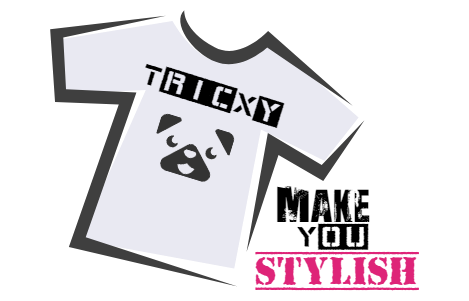
At its core, money represents value.
If I do some work for you, you give me money in exchange for the value I gave you.
I can then use that money to get something of value from someone else in the future.
Throughout history, value has taken many forms and people used a lot of different materials to represent money.
Salt, wheat, shells and of course gold have all been used as a medium of exchange.
However, in order for something to represent value people have to trust that it is indeed valuable and will stay valuable long enough for them to redeem that value in the future.
Up until a hundred years ago or so We always trusted in something to represent money.
However something happened along the way and we’ve changed our trust model from trusting something to trusting in someone.
Let me explain.
Over time, people found it too cumbersome to walk around the world carrying bars of gold or other forms of money, so paper money was invented.

Here’s how it worked:
a bank or government would offer to take possession of your bar of gold;
let’s say worth $1000, and in return, that bank would give you receipt certificates, which we call bills, amounting to $1000.
Not only were these pieces of paper much easier to carry, but you could spend a dollar on a cup of coffee and not have to cut your gold bar into a thousand pieces.
And if you wanted your gold back, you simply took $1000 in bills back to the bank to redeem them for the actual form of money, in this case that gold bar, whenever you needed…And so, paper began its use as money as an instrument of practicality and convenience.
However as time progressed, and due to macroeconomic changes,this bond between the paper receipt and the gold it stands for was broken.
Now, to explain the path that led us away from the gold standard is extremely complex, but suffice to say that governments told their people that the government itself would be liable for the value of that paper money.
Basically we all said “let’s just forget about gold and trade paper instead”. So people continued to trade with receipts that are backed by nothing but the government’s promise.
And why did that continue to work?
Well, because of trust. Even though there is no actual commodity backing paper money, people trusted the government and that’s how fiat money was created.
Fiat is a Latin word that means “by decree”. Meaning the dollars, or euros or any other currency for that matter have value because the government orders it to.
It’s what is known as “legal tender” – coins or banknotes that must be accepted if offered as payment.
So the value of today’s money actually comes from a legal status given to it by a central authority, in this case, the government.
And so the trust model has changed, from trusting something to trusting someone, in this case, the government.
Fiat money has two main drawbacks:
1. It is centralized:
You have a central authority that controls and issues it.
In this case the government or central bank.
2. it is not limited by quantity:
The government or central bank can print as much as they want whenever needed and inflate the money supply on the market.
The problem with printing money is that because you’re flooding the market with more money the value of each dollar drops, so your own money is worth less.
When you see prices rising throughout the years it’s not necessarily that prices are rising as much as that the purchasing power of your money is dropping.
You need more dollars to buy something that used to “cost less”.
Once fiat money was in place, the move to digital money was pretty simple.
We already have a central authority that issues money, so why not make money mostly digital and let that authority keep track of who owns what.
Today we mainly use credit cards, wire transfers, Paypal and others forms of digital money.
The amount of physical money in the world is almost negligible and is getting smaller with each year that passes.
So if money today is digital, how does that even work?
I mean, if I have a file that represents a dollar, what’s to stop me from copying it a million times and having a million dollars?
This is called the “double spend problem”.
The solution that banks use today is a “centralized” solution;
they keep a ledger on their computer which keeps track of who owns what.
Everyone has an account and this ledger keeps a tally for each account.
We all trust the bank and the bank trusts their computer, and so the solution is centralized on this ledger in this computer.
You may not know this, but there were many attempts to create alternative forms of digital currencies, however none were successful in solving the double spend problem without a central authority.
Whenever you give a anyone control over the money supply you’re giving them enormous power and this creates three major issues:
The first issue is corruption;
power corrupts, and absolute power corrupts absolutely.
When banks have a mandate to create money, or value, they basically control the flow of value in the world, which gives them almost unlimited power.
A small example of how power corrupts can be seen in the Wells Fargo’s scandal where employees secretly created millions of unauthorized bank and credit card accounts in order to inflate the bank’s revenue stream, without their customers knowing about it for years.
The second issue of a centralised system is mismanagement.
If the central authority’s interest isn’t aligned with the people it controls there may be a case of mismanagement of the money.
For example, printing a lot of money in order to save a certain bank or institution from collapsing, as what happened in 2008.
The problem with printing too much money is that it causes inflation and basically erodes the value of the citizen’s money.
One extreme example for this is Venezuela, where the government has printed so much money, and the value of it has dropped so much, that people are no longer counting money but are weighing it instead.
The last issue is control.
You are basically giving away all control of your money to the government or bank.
At any point in time the government can decide to freeze your account and deny you access to your funds.
Even if you use only cold hard cash the government can cancel the legal status of your currency as was done in India a few years back.This was the state of things until 2009.
Creating an alternative to the current monetary system seemed like a lost cause.
But then everything changed….

